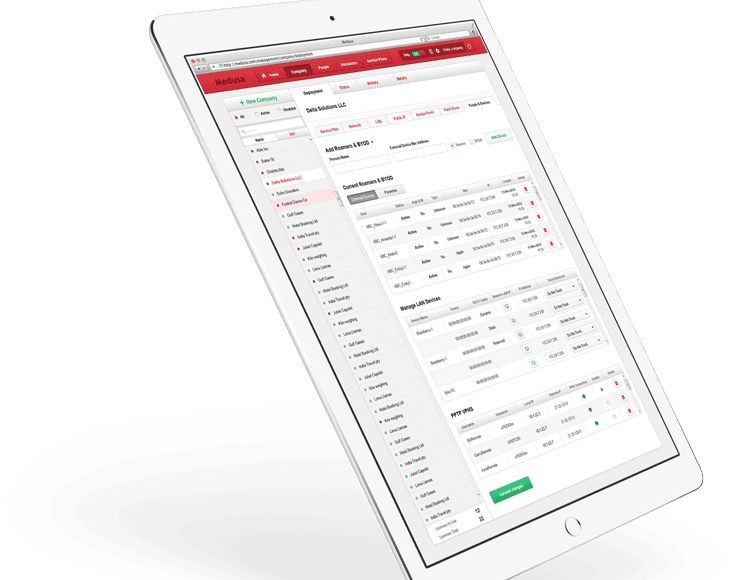Gartner suggests that public cloud revenue alone will cross the $200bn p.a. line in 2019. This growth is driven by the operational benefits, scalability and cost efficiency that has made cloud computing so universally attractive.
Understanding cloud service models
CTOs must consider the flexible ways in which technology-as-a-service can be deployed, to ensure even the most unique enterprise infrastructure technology requirements are successfully provisioned in the cloud. Cloud provisioning can be divided into three levels:
- IaaS or infrastructure-as-a-service. Vendors providing IaaS deliver ready-to-use hardware and software infrastructure that is scalable, automated and flexible. IaaS covers bare operating systems, storage, hosting and connectivity. For many enterprises, IaaS provides the most flexibility.
- PaaS or platform-as-a-service. PaaS takes ready-made infrastructure and adds a layer of software capabilities and management to enable application deployment. A PaaS provider will provide an operating system and associated services including database software and other basic tools and capabilities.
- SaaS or software-as-a-service. The archetypical cloud service model, SaaS vendors, provide all elements of a working software application, ready to go. Vendors manage all aspects of technology infrastructure and provide an application that is ready to use from day one.
Each service model entails a trade-off. IaaS offers broad control over technology provisioning but requires expertise and management overhead. In contrast, a SaaS solution requires little technical intervention, but users lose ultimate control over the application.
This trade-off implies flexibility in that an enterprise can choose to host mission-critical or regulated applications with an IaaS vendor while transferring everyday applications across to cheaper SaaS platforms.

Cloud deployment alternatives
Cloud infrastructure can be deployed in different modes with each offer flexibility similar to the choices in cloud service models. First, public cloud infrastructure is entirely controlled by a third party. Hardware and software are pooled and clients rent a share of this pool. Costs are low, but a loss of control is implied that many enterprises find hard to tolerate.
In contrast, private cloud deployments are exclusively for the use of one organisation. Note that public clouds can be owned by an enterprise itself or owned and provided by a third party. Broadly speaking private clouds offer more control and more opportunity for customisation.
Just as with cloud service models, enterprises can opt for a mix of public and private clouds, choosing to host some applications in the public cloud and others in the private cloud. This would be a hybrid cloud deployment.
Advantages of cloud enterprise infrastructure
With a range of cloud models and deployment options available organisations can easily take advantage of the benefits that cloud computing brings. To name just a few:
- Cloud environments can offer improved security. Secure data centres deploy security measures that ordinary enterprises that do not have technology as a core business can struggle to match. Simultaneously, cloud infrastructure is commonly replicated across multiple sites, creating a fluid layer of redundancy that ensures uptime.
- By definition, cloud infrastructure is not tied to a single location in the way an on-premise solution often is. Teams can work remotely, and the geographic reach of an organisation can expand in a cost-efficient manner. Enterprise infrastructure in the cloud can break down physical borders.
- The pooled, rented business model of cloud computing implies that cloud technology infrastructure is more agile. It is easier to scale up in the cloud by matching technology requirements when these rise and by scaling down when requirements drop. Cloud computing is flexible too, allowing fast and easy changes when application requirements shift.
- Cloud services are designed to connect and integrate better. Vendors commonly provide tools and platforms that allow native integration, with API-level exchange of data. In contrast to legacy on-premise applications, cloud infrastructure imposes fewer limitations on interconnectivity.
- Finally, many of the most innovative computing applications are cloud-native. Enterprises keen to exploit artificial intelligence, big data, and machine learning will find setting up the required infrastructure and platforms prohibitive. In contrast, these advanced computing tools are easily and cheaply accessible in the shape of PaaS and SaaS solutions.
Aside from offering cheaper, more flexible computing, cloud infrastructure also opens up possibilities that are difficult for traditional on-premise infrastructure to match.
Besides, cutting-edge tech such as IoT is simply a natural fit for cloud computing because of the geographic reach and interconnectivity that enterprise infrastructure in the cloud achieves. But how do enterprises make the shift to cloud infrastructure?
Migrating to the cloud: four steps
However much of its technology requirements an enterprise decides to move to the cloud, there are essentially four steps to a successful migration.
- Assess current applications and establish migration priorities. Ensure that all stakeholders are involved in this initial process as cloud migration is always executed to improve business outcomes.
- Start the migration process with thorough planning. Before the implementation starts, you need to design new enterprise infrastructure and create an extensive migration plan, outlining your objectives and considering integration possibilities, as well as improvements to security, latency and scalability.
- Evaluate your cloud solution after migration, including the eventual costs. Optimise where needed and keep an eye on costs. At this stage, you can consider geo location-specific pricing, develop scaling scenarios and containerise your critical applications.
- Be rigorous about security and management. Ongoing monitoring and support are essential, and enterprise infrastructure in the cloud must be closely monitored for security and data breaches.
Throughout the migration process, an enterprise should remain cognizant of legacy applications. Older, on-premise applications can have unique requirements and can lack the ability to connect with other cloud apps. As a result, special care needs to be taken with legacy apps to avoid migration hurdles.


Getting started with enterprise infrastructure in the cloud
Yes, migrating enterprise workloads to the cloud is challenging, particularly where legacy applications and regulatory restrictions are in place. Cloud computing is uniquely malleable, and determined enterprises can tap just as much value out of cloud infrastructure as anyone else.
Unsure of where to start? Contact ELEKS for end-to-end cloud migration service.

Related Insights








The breadth of knowledge and understanding that ELEKS has within its walls allows us to leverage that expertise to make superior deliverables for our customers. When you work with ELEKS, you are working with the top 1% of the aptitude and engineering excellence of the whole country.

Right from the start, we really liked ELEKS’ commitment and engagement. They came to us with their best people to try to understand our context, our business idea, and developed the first prototype with us. They were very professional and very customer oriented. I think, without ELEKS it probably would not have been possible to have such a successful product in such a short period of time.

ELEKS has been involved in the development of a number of our consumer-facing websites and mobile applications that allow our customers to easily track their shipments, get the information they need as well as stay in touch with us. We’ve appreciated the level of ELEKS’ expertise, responsiveness and attention to details.


